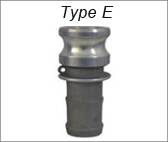
Discover how camlock couplings are transforming industrial fluid management with faster connections, virtually leak-proof performance, improved worker safety, remarkable versatility, and exceptional return on investment.
In today’s competitive industrial landscape, productivity isn’t optional—it’s essential for survival. Manufacturing units, chemical processing facilities, and construction sites face growing demands to deliver results with tighter resources and schedules. Equipment decisions often determine whether operations thrive or merely survive in this high-pressure environment. Managers constantly search for solutions that boost efficiency without compromising safety or quality. The manufacturing sector particularly benefits from innovations that simplify connections and reduce downtime, which explains the rising popularity of camlock coupling technology across diverse industrial applications.
Camlock couplings have emerged as game-changers in this high-stakes environment. These seemingly simple connectors are quietly transforming how liquids and gases move through industrial systems. The real impact goes deeper than most realise. The right camlock coupling doesn’t just connect pipes—it solves problems that keep operations managers up at night.
1. Drastically Reduced Connection Time
Gone are the days of threading connections by hand. That tedious process is becoming obsolete. Modern camlock systems let workers make secure connections in seconds rather than minutes. This means a maintenance team that once needed a full day for system changes can now finish before lunch.
A manufacturing plant in Pune recently cut their changeover time by 75% after switching to camlock systems. That’s not just convenience—it’s money saved and deadlines met when time pressures are highest.
2. Virtually Eliminated Fluid Loss
Leaks aren’t just messy—they’re dangerous and expensive. The sealed design of quality camlock couplings creates nearly leak-proof connections that traditional systems simply cannot match.
This matters tremendously when handling caustic chemicals, expensive fluids, or environmentally sensitive materials. Every drop saved protects workers, the environment, and the bottom line. An 85% reduction in fluid waste could transform operational costs overnight.
3. Enhanced Worker Safety
Traditional connections often require tools, physical strain, and lengthy exposure to potentially hazardous materials. This creates unnecessary risks in already challenging environments.
Camlock systems change this equation completely. The quick-connect design reduces exposure time, and the secure locking mechanism prevents accidental disconnection under pressure. Workers face fewer injuries, less fatigue, and greater confidence when working with properly designed camlock systems.
4. Unmatched Versatility Across Industries
Perhaps most striking is how these fittings have crossed traditional industry boundaries. From food processing to chemical manufacturing, aerospace to wastewater treatment—camlock couplings have found their place everywhere fluid transfer happens.
This versatility stems from their adaptable design and material options. Stainless steel works for sanitary applications, aluminium serves lightweight needs, and specialised alloys handle corrosive environments. Few connection technologies serve so many industries so well.
5. Significant Cost Savings Over System Lifetime
The initial investment in quality camlock couplings pays dividends throughout a system’s life. Their durability means fewer replacements. Their ease of use reduces labour costs. Their leak-resistant design saves valuable process fluids.
A chemical processor in Gujarat calculated a 3-year ROI of 320% after upgrading to a complete camlock system. The maths simply works in their favour.
The fluid transfer landscape continues changing rapidly, and camlock couplings lead that change. Operations that recognise and embrace this shift gain tangible advantages—faster processes, safer workplaces, and healthier finances.
As industrial challenges grow more complex, sometimes the simplest solutions make the biggest difference. That’s the camlock story—small components delivering outsized results where they matter most.


Leave a Reply